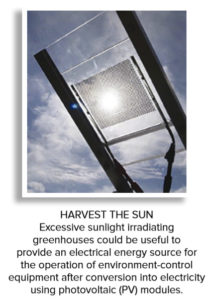While protected cropping is the fastest-growing food-producing sector in Australia, its high energy requirements and subsequent costs remain a key barrier for many vegetable growers. But a new research project into exciting new technologies will investigate innovative ways to address this.
Funded by Hort Innovation using the vegetable industry levy and funds from the Australian Government, the approximately $1.3 million work aims to improve energy-efficient design and energy use in greenhouses, with a focus on the use of smart glass and semitransparent photovoltaic glass (STPVG).
The project is being led by world-class researchers at Swinburne University of Technology in its ARC Centre of Excellence for optical science and photonics technology, bringing together top photonics experts and horticulture trainers.
“Smart glass is glass with adjustable light transmittance,” said Associate Professor Baohua Jia, project leader at Swinburne. “That means the colour or the intensity of transmitted sunlight can be tuned by this type of glass.”
“As vegetables don’t need all colours or wavelengths of light to grow, allowing enhanced stimulation from certain colours can make photosynthesis in vegetables more effective”, she said.
Smart glass also allows environmental control – for example, in full sun the glass can be made darker to prevent plants from burning.
“STPVG is a type of thin-film solar cell on glass that could simultaneously generate electricity from some of the light and allow the rest to pass through. So the idea is to use the light with colours not required for photosynthesis to generate the electricity to meet the requirement of the facility. In the meantime, the useful colours will be transmitted through the glass to allow the growth of the vegetable.”
Associate Professor Jia said while using smart glass and photovoltaics to select transmitted sunlight and generate electricity has been trialled overseas, it hasn’t been largely deployed in Australia. “But the technology has enormous potential to boost energy efficiency,” she said.
The new research project will be conducted in two phases, beginning with a detailed review of existing and in-development smart glass and STPVG technologies, prior to trials to assess their use and value under Australian conditions.
Phase two of the HIA project VG15038 will be the development of a benefitcost analysis ensure the project outputs align closely with industry needs.

